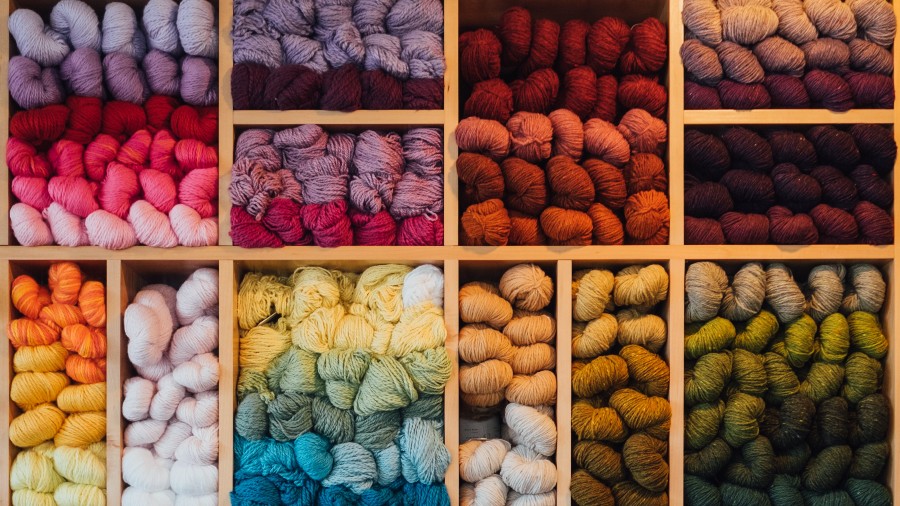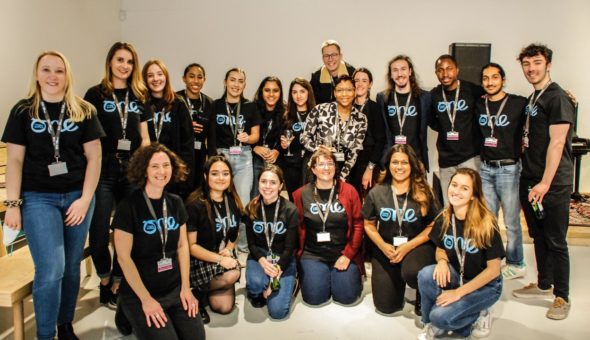Throughout March, we’ll be exploring issues that relate to women and feminism, to mark Women's History Month and International Women’s Day on the 8th. Specifically, our posts will look at research that explores bias, in one form or another, in recognition of this year's IWD theme 'Break the Bias'. In this piece Lorna Stevens introduces her recently published book The Routledge Companion to Marketing and Feminism. She looks at one of the chapters in the book, showing how the dynamics playing out in feminism around intersectionality and access can be seen and understood through the tensions around the resurgence of women’s knitting groups.
For most of us knitting conjures up images of our grandmothers or mothers, nestled in a favourite armchair in the evening time when chores were done. The click clack of needles a soothing background sound associated with domestic cosiness as the day drew to a close. My grandmother used three fine needles and four ply wool to knit socks for her extended family. In her later years she unpicked old jumpers and knit simple squares that she crocheted together to create multi-coloured blankets. My mother was also a knitter. No pattern was too complicated for her, and my children all had handknit Aran sweaters. Most recently she knit colourful, tiny tops and little hats for a religious charity that sent them overseas to a premature babies’ hospital in Africa. Her knitting days are over now but I still own sweaters she made for me over the years.
I’m sure my recollections are not unique. Many of us associate knitting with womenfolk, the domestic sphere, a relaxing yet productive activity with practical results. But what does knitting have to do with feminism, and why do we feature multi-coloured balls of wool on the cover of our new book The Routledge Companion to Marketing and Feminism? An incongruous association surely? Is it a marketing ploy to generate debate and discussion? Did we just want an eye-catching, colourful cover and reckoned colourful balls of wool would fit the bill?
In fact, our cover references one of the chapters in our edited collection by Alev Pinar Kuruoğlu that is about women’s knitting circles. And yes, it turns out knitting is a feminist issue – the feminist issues unravelled in the chapter are as varied and complex as the knitting patterns my mother so enjoyed.
Women’s work
Remember the ‘pussy hat’ protests of 2017 when thousands of women donned knitted pink hats with cat ears to object to the election of Donald Trump and to advocate for gender equality? Then in 2019 the knitting and crocheting portal Ravelry engaged in what has been termed ‘Craftivism’, by banning their members from expressing support for Trump on their message boards and prohibiting the sharing of patterns for MAGA hats. They did this to challenge patriarchal values and promote women’s traditional art forms. So we see that there are wider issues being addressed in knitting groups about reclaiming women’s crafts, honouring women’s work, and the agency that comes from women working together in collectives.
The protests mentioned above took knitting out of the domestic sphere and into the streets. The resurgence of knitting in the 1990s coincided with the rise of the internet and a cultural revival of handmade crafts. Knitting circles both online and offline have proliferated, enabling women to come together and knit together. But these spaces are also sites where contemporary feminist debates are being held around intersectionality, diversity, voice and representation. We now speak of feminisms rather than feminism, as there are many kinds that take account of differences as well as similarities. The domination of the feminist movement by white, middle-class Western women is now being challenged. As the conversation around feminism changes - and previous assumptions about who is allowed to speak and take up space are confronted - it comes as no surprise that knitting circles have been accused of being the exclusive domain of white, middle-class women that may not welcome ‘other’ women. What happens when these spaces are colonised by so-called “space-invaders” who don’t fit this mould and who challenge the prevailing norm?
Diversifying our knitting circles – and our feminism
We may think of any group or club as being homogenous, a community of shared experiences, common values. But can groups be open to diversity, to differences? Many black women knitter activists challenge the “whitewashing” of knitting circles. In so doing they address the issue of intersectionality in feminism – drawing attention to the fact that class, gender, race, (dis)ability, body size, sex, religion et. all impact on our particular life experiences and indeed privileges (or lack of privileges) as women. Aside from ‘calling out’ knitter-bloggers who express racist views, many BIPOC also ‘talk back’ to draw attention to wider issues of exclusion and silencing. Not all bodies are cosily enveloped by knitting communities, it seems, and not everyone is deemed “knitworthy”.
Even in the cosy, joyful world of knitting there are inequalities, disagreements and challenges when knitters get together to form collectives. It is not always possible to find common ground when life experiences are so varied. This has led to the proliferation of different kinds of knitting circles, online and offline, that better reflect the diverse needs and experiences of specific knitting groups. We now have a renewed appreciation of the ancient craft of knitting, of women’s knitting circles, of the warm solidarity that may be found in such groups, but these knitting communities also reflect the conflicts and contestations that arise when it is assumed by a dominant community that one size (or pattern) fits all!
Responses




I read your blog. Having very use full information help me a lot. I will read more articles on your blog.
News Aqwa